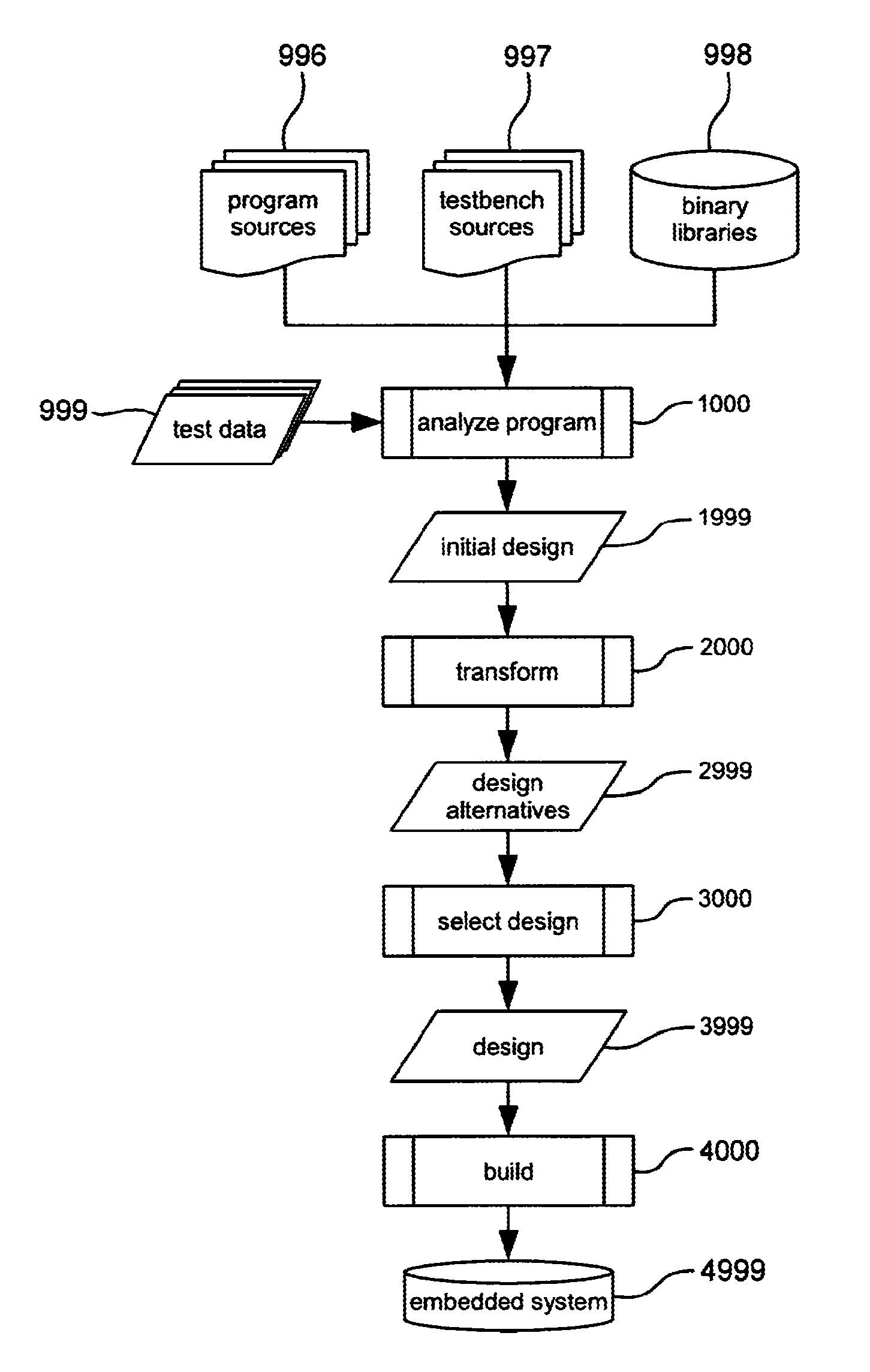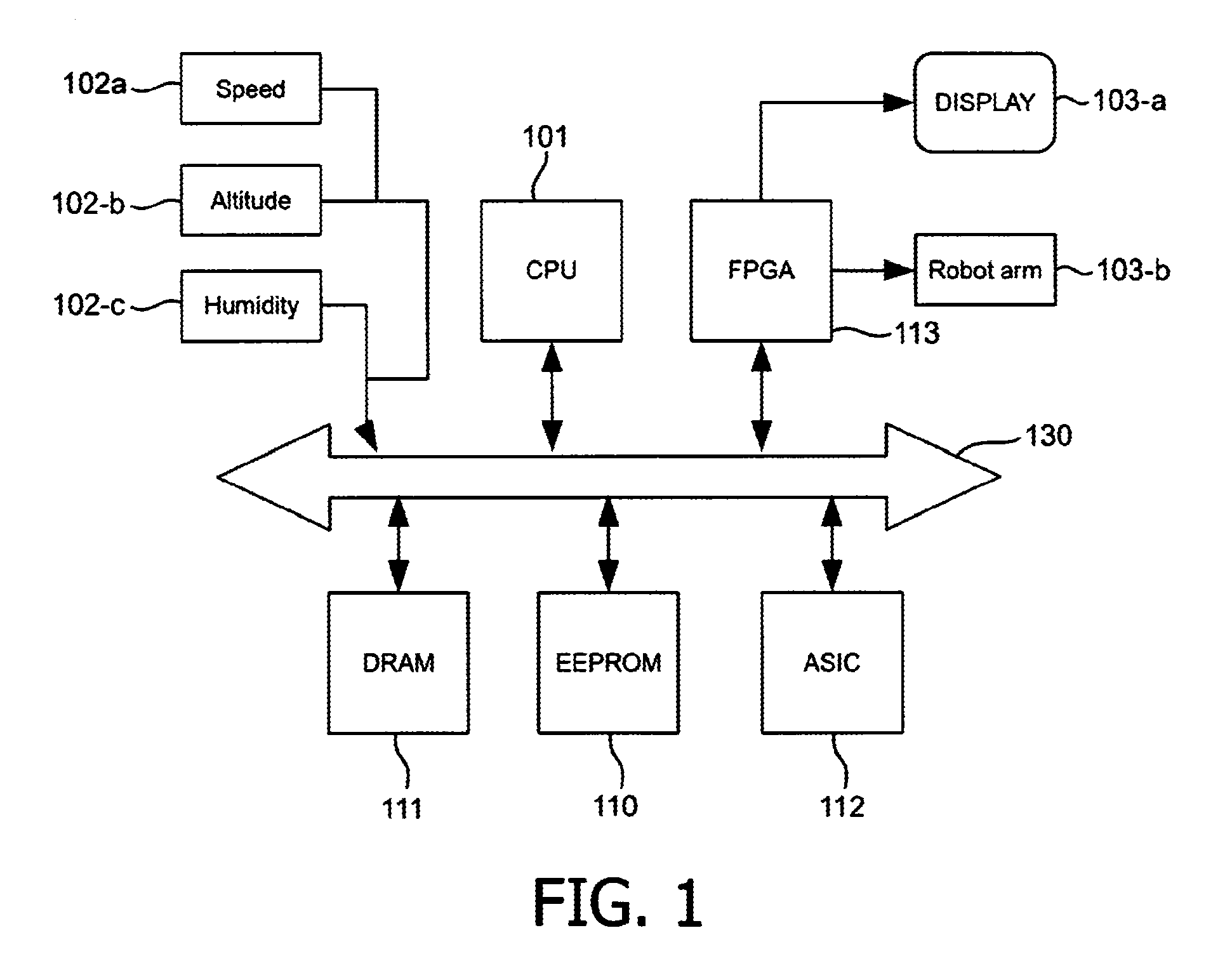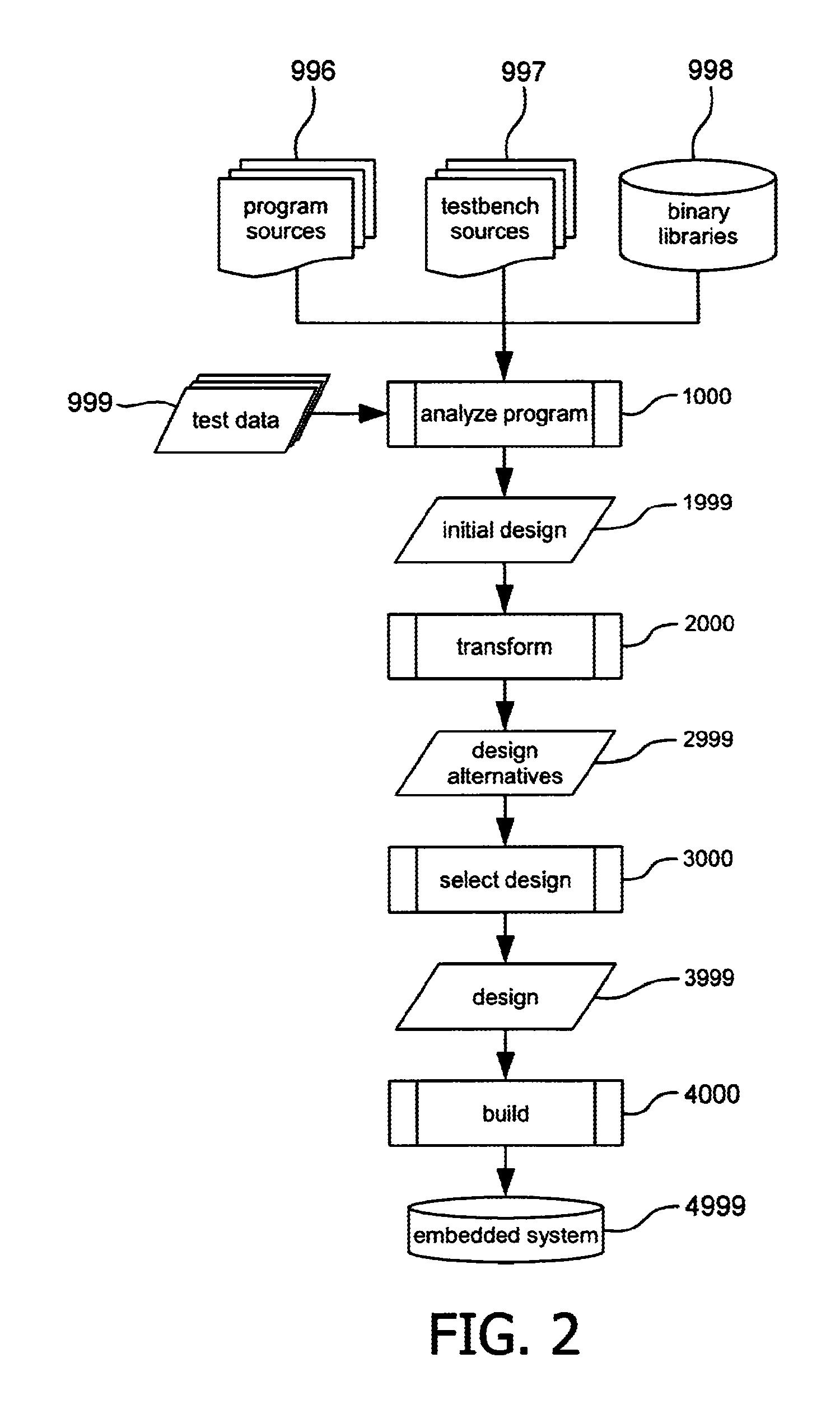Embedded system development
a technology of embedded systems and embedded systems, applied in the direction of cad circuit design, program control, instruments, etc., can solve the problems of time-consuming, complex, and rapid use of embedded systems, and achieve the effects of reducing costs or circuit board space, improving partitioning of specific hardware, and speeding up operation or response tim
- Summary
- Abstract
- Description
- Claims
- Application Information
AI Technical Summary
Benefits of technology
Problems solved by technology
Method used
Image
Examples
Embodiment Construction
Background: Embedded Systems
[0057]FIG. 1 schematically shows an example embedded system. The system in FIG. 1 is used by way of example to show and explain common hardware, software and design constructs in embedded systems. It by no means limits the usefulness or scope of the invention: the invention can be used for any type of embedded system for any purpose. The system is built around a central processing unit CPU 101. Many CPU architectures can be used in embedded systems. Popular choices are RISC and VLIW-based CPU architectures.
[0058]The CPU receives input from sensors 102-a, 102-b, 102-c, which may provide digital input that can be used directly, or analog input that needs to be converted using an AD convertor. By way of example, three sensors are shown: sensor 102-a to provide input on speed, sensor 102-b to provide input on altitude and sensor 102-c to provide input on humidity. The input is transformed into output signals that e.g. may control an actuator which controls a ...
PUM
 Login to View More
Login to View More Abstract
Description
Claims
Application Information
 Login to View More
Login to View More - R&D
- Intellectual Property
- Life Sciences
- Materials
- Tech Scout
- Unparalleled Data Quality
- Higher Quality Content
- 60% Fewer Hallucinations
Browse by: Latest US Patents, China's latest patents, Technical Efficacy Thesaurus, Application Domain, Technology Topic, Popular Technical Reports.
© 2025 PatSnap. All rights reserved.Legal|Privacy policy|Modern Slavery Act Transparency Statement|Sitemap|About US| Contact US: help@patsnap.com



